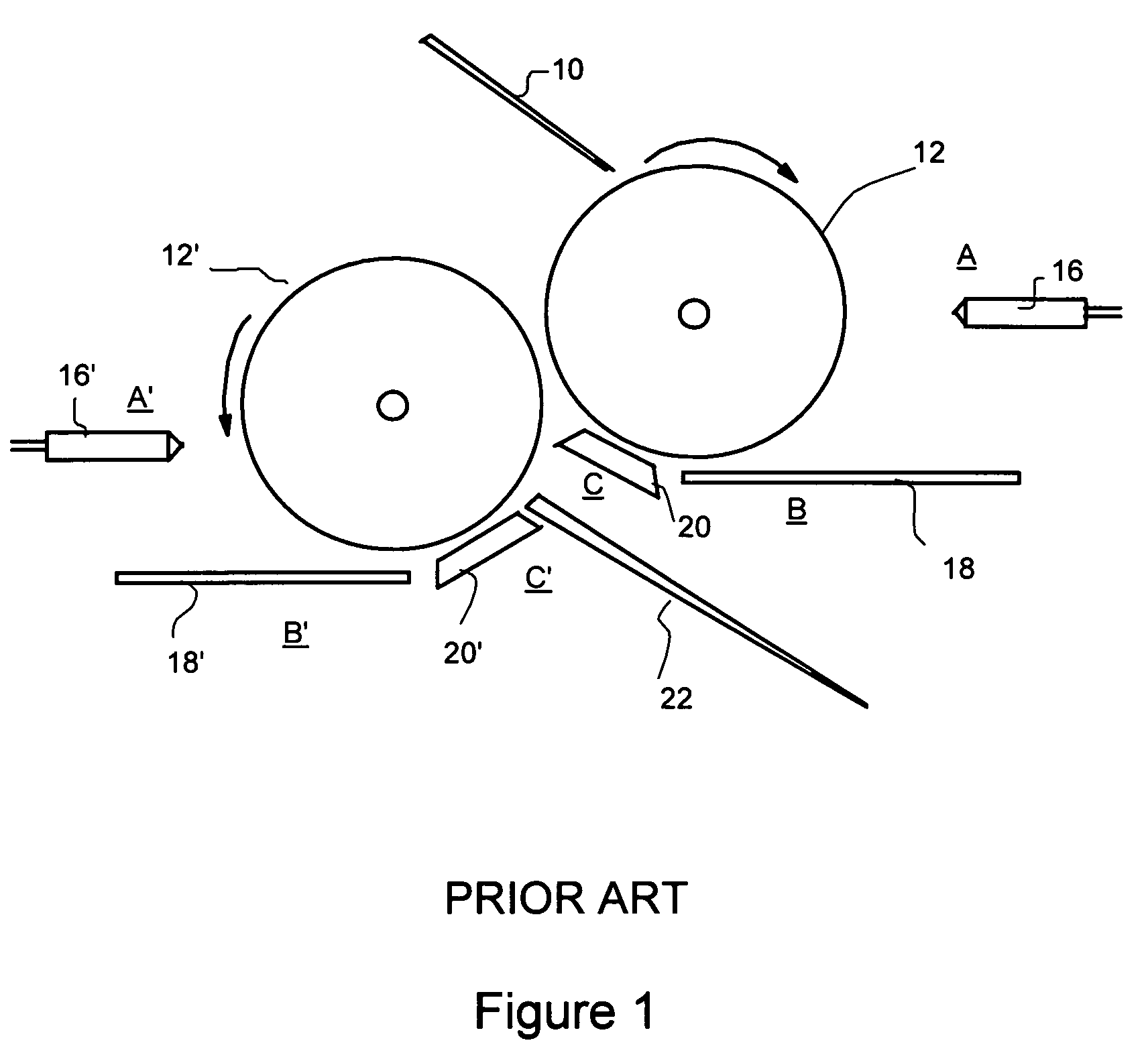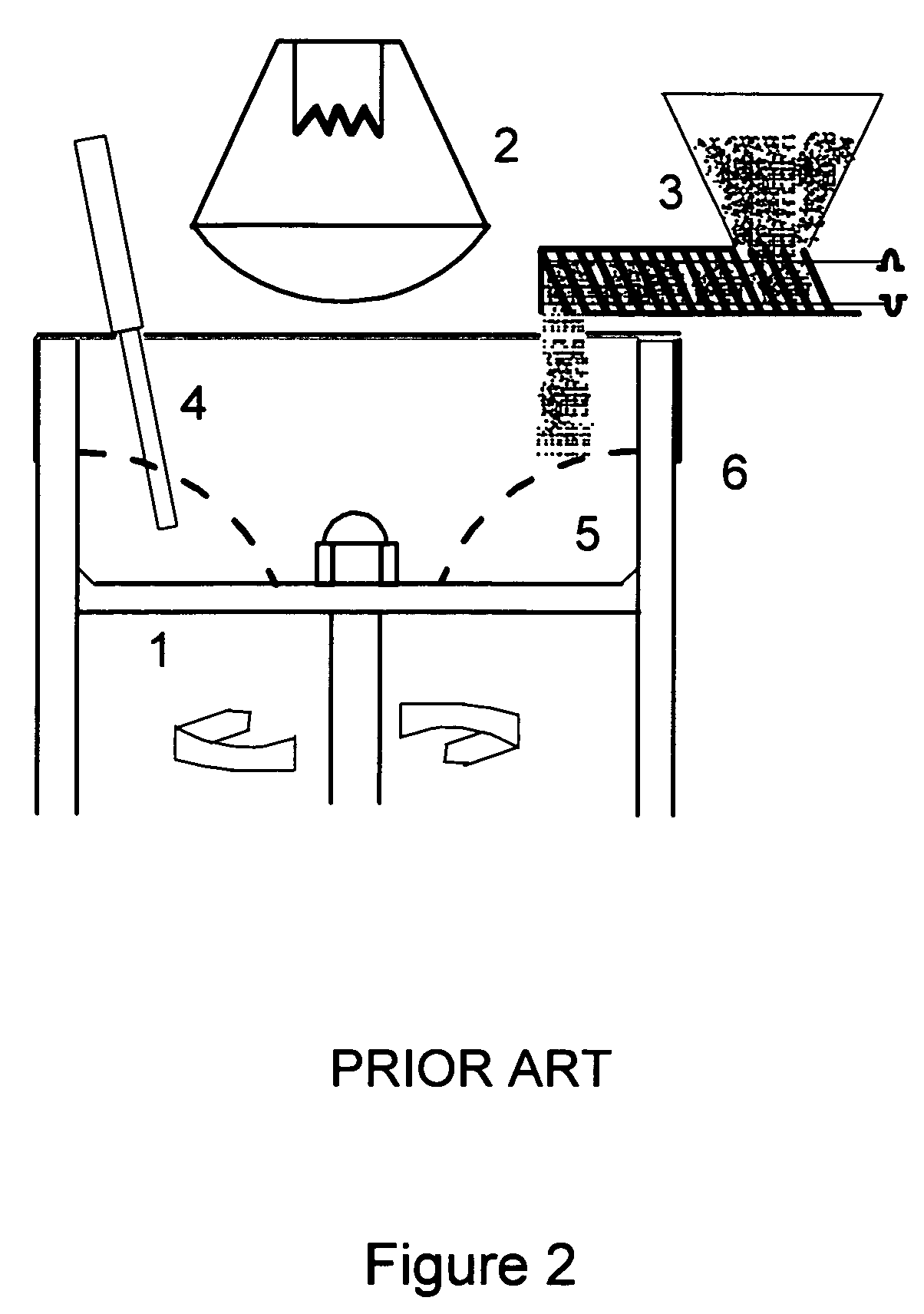Direct coating solid dosage forms using powdered materials
a technology of powdered materials and powdered materials, which is applied in the direction of powder delivery, granulation in rotating drums, powder delivery, etc., can solve the problems of increasing the cost of coating,
- Summary
- Abstract
- Description
- Claims
- Application Information
AI Technical Summary
Benefits of technology
Problems solved by technology
Method used
Image
Examples
Embodiment Construction
[0053]The phrase “film forming polymer powder composition” refers to the powder polymer being used to form the coating on the solid dosages and can optionally include other constituents or materials. Possible optional materials include fillers such as talc, pigment such as titanium oxide, and small amounts of the solid plasticizer.
[0054]As used herein, the term “curing” means applying an energy source, generally a heat source but it may also be an ultraviolet source, to increase the temperature of the coated solid dosage forms, so as to solidify or partially solidify the coating on the surface of the dosage. Such heat source, for example, can be a heating element inside the chamber of the rotatable housing in which the coatings are applied, or outside the housing but close enough to be able to transfer heat to the housing, or a hot air flowing through the chamber. For polymer powders sensitive to ultraviolet waves, an ultraviolet source may also be used as an energy source for curin...
PUM
| Property | Measurement | Unit |
|---|---|---|
| Tg | aaaaa | aaaaa |
| Tg | aaaaa | aaaaa |
| Tg | aaaaa | aaaaa |
Abstract
Description
Claims
Application Information
 Login to View More
Login to View More - R&D
- Intellectual Property
- Life Sciences
- Materials
- Tech Scout
- Unparalleled Data Quality
- Higher Quality Content
- 60% Fewer Hallucinations
Browse by: Latest US Patents, China's latest patents, Technical Efficacy Thesaurus, Application Domain, Technology Topic, Popular Technical Reports.
© 2025 PatSnap. All rights reserved.Legal|Privacy policy|Modern Slavery Act Transparency Statement|Sitemap|About US| Contact US: help@patsnap.com



